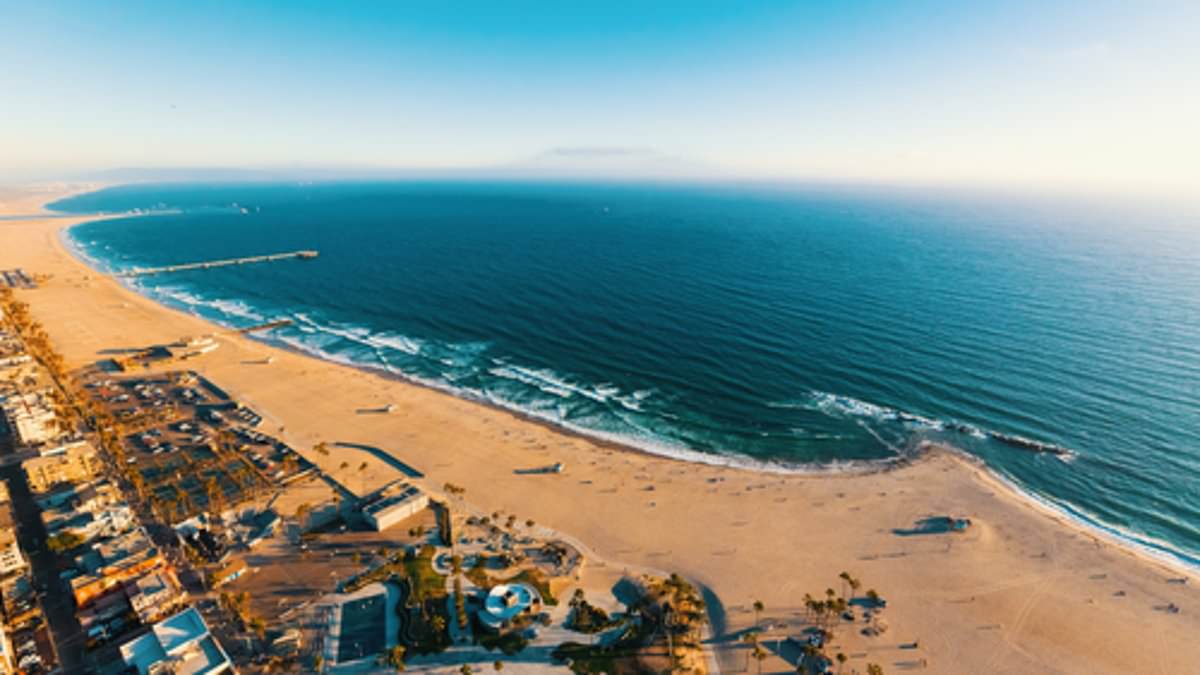Two famous Los Angeles beaches have been forced to close down after gallons of sewage was accidentally discharged into the ocean.
The Department of Public Health has asked beach goers to not visit Venice Beach and Dockweiler State Beach after about 15,000 gallons of untreated sewage ended up in Ballona Creek.
Sanitation officials explained a water main break near 2700 S. Cresta Place pushed sand into the sewer and caused a blockage on July 20.
By the time health officials were made aware of the issue, the sewage had been flowing for about two hours in ocean waters.
Both beaches are expected to remain closed until two water quality tests show that bacterial levels meet safe health standards – as the first test began yesterday.
Venice resident Scott Culbertson explained how disappointed locals were after being barred from enjoying the beach on a sunny weekend.
‘It’s sort of heartbreaking. It was hot yesterday, people wanted to come to the beach and they wanted to bring their kids to the beach,’ he told LA Times.
He also noted that the sudden discharge was very harmful to marine life as well as local businesses.
‘Wildlife are feeding and nesting in these waters, foraging They didn’t get the text alert that there was a devastating sewage leak,’ Culbertson said.
Earlier this month, a new report found several iconic California beaches among the dirtiest along the West Coast thanks to sewage runoff and pollution.
Ten beaches along the shores of California and Baja California, including around the Santa Monica Pier, received the poorest water quality ratings in Heal the Bay’s annual report card.
Many of the shorelines had heavy levels of bacteria due to rainfall that overwhelmed sewage systems and washed pollution into the ocean.
‘Nearly every square inch is covered with buildings or concrete or asphalt, and that means we have more storm water collecting more pollution and heading for coastal waterways.’
Approximately 38 million gallons of sewage spilled into the ocean and coastal waterways due to increased rainfall this year, the report found.
Coastal counties in California received 31 percent more rainfall than the 10-year average.
Tijuana River Mouth ranked the filthiest due to persistent sewage issues. Over 100 billion gallons of raw sewage from Mexico’s Tijuana River, dumped into the Pacific Ocean over the past five years, originating from inadequate sewage infrastructure.
A significant portion of the raw sewage originates in impoverished Tijuana colonias, neighborhoods where residents lack proper housing due to poverty, according to Fay Crevoshay, the communications and policy director of the international nonprofit WILDCOAST.
Imperial Beach, once a renowned surfing destination, has fallen victim to the the wastewater surges that have been washing ashore for decades and has been dubbed the ‘stinkiest beach in America.’
Playa Beach, Tijuana Slough, Border Field State Park and El Faro all made the list due to sewage exposure from the Tijuana River.
